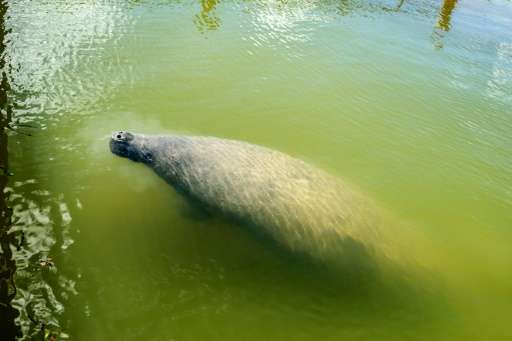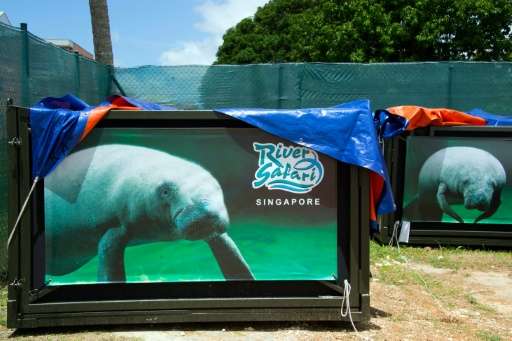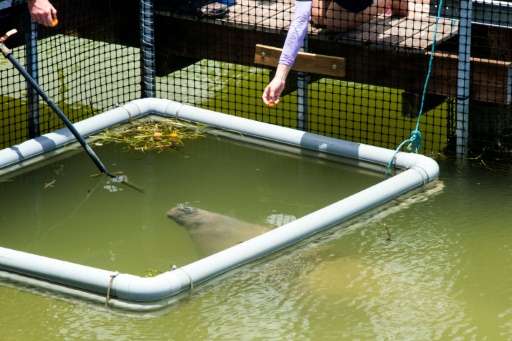Missing for a century, Singapore-born manatees re-settle in Caribbean

Two Singapore-born manatees which were flown halfway around the world this week under a programme to restore Caribbean populations of the endangered sea cows are settling in well in Guadeloupe, their carers said.
The giant, slow-moving, whiskered herbivores became extinct in the French overseas territory in the early 20th century.
Kai, seven, and Junior, six, were both born and bred at Singapore Zoo.
On Monday, the two were flown 19,600 kilometres (12,200 miles) to their new tropical home, where the gentle sloth-like male mammals received a rapturous welcome.
Guadeloupe National Park said Thursday the pair, who were regularly sprayed with water during their 34-hour journey in open-top crates, were "doing well" after their voyage.
"The first signs are positive," one of their minders said.
"They are starting to interact with their carers and to feed and keep hydrated," he told reporters.
The new arrivals, who weigh between 500 kilogrammes and 700 kg (1,100 and 1,540 pounds), were released into Grand Cul-de-Sac Marin, a 15,000-hectare (37,000-acre) protected bay, where they are expecting company shortly.
Over the next five years they will be joined by 13 other manatees supplied by zoos around the world, 10 of which will be female.

Any offspring from the group will be released into the wild.
Kai and Junior's arrival is the culmination of a decade-long effort to reintroduce the aquatic giants behind mermaid myths—perhaps because they rise out of the water and can turn their heads—that hit several snags along the way.
The first specimens had been expected to arrive from Brazil in 2014 but Brazil backed out of the agreement in 2015, leaving Guadeloupe high and dry.
Known locally as "maman d'lo" or mother of the sea, West Indian manatees were an important part of the French territory's ecology before being hunted to extinction in the early 1900s.
A mammal that can grow to up to 4.5 metres (15 feet) in length, the species inhabits warm coastal waters, mangrove swamps and estuaries where it grazes on plants.
The manatee is listed as "vulnerable" on the International Union for Conservation of Nature's Red List of Threatened Species.
Discussion of the repopulation programme started in 2007 and included educating the Guadeloupe public about the animals, US-based project consultant Ray Ball told AFP.
"You can't reintroduce an animal species to a country if the people don't want it," he said.

Casting net wide
Kai and Junior, whose ancestors came from across the Caribbean in Guyana, were donated by Singapore Zoo.
"We never thought we'd have to go that far for them," Herve Magnin, head of the heritage department at Guadeloupe National Park said.
Relief over their arrival was palpable in Guadeloupe, which had feared any further delays to starting the programme would jeopardise 3.5 million euros ($3.9 million) in funding from the European Union, the project's main backer.
Magnin said the delays in getting the manatees to Guadeloupe had also made it a battle to keep people involved in project "Life Sirenia" motivated.
"We needed animals," he said
Guadeloupe is now in discussions with Mexico, Guyana and Colombia on receiving other manatees in the coming months.
The national park's director, Maurice Anselme, said the aim was to have a broad selection of specimens "to avoid inbreeding and have a healthy herd."
© 2016 AFP




















